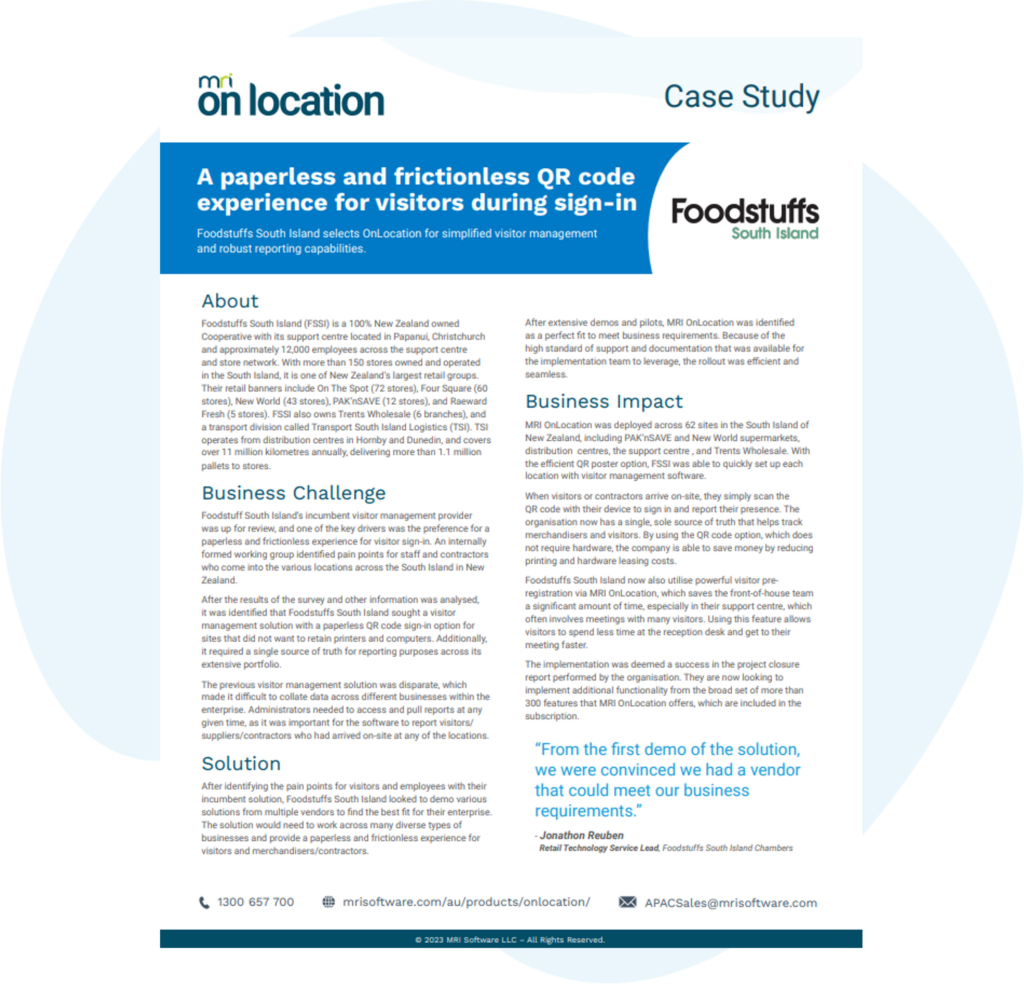What is compliance in the workplace?
Regardless of size or industry, every business must meet regulations and requirements to protect the people, places, and ideas that power their organisation. Companies get exposed to various risks daily, which can severely threaten an organisation’s financial standing and reputation as a reputable business.
As systems, software, processes, and laws become more complex, organisations must continually adapt their risk assessment strategies to ensure they stay on top of compliance requirements and that their entire workforce and procedures comply with regulations.
A recent step many companies have taken to ensure compliance across their organisation is the introduction of an integrated visitor, contractor, and employee presence management system.
Workplace compliance impacts every aspect of your business and is essential to any company’s operational strategy. Despite its impact, workplace leaders often consider it a complex issue that isn’t quickly resolved. Workplace compliance isn’t as complicated as you might think, and you can ease the logistical headache with the right strategy, software, and tools.
Software such as a presence management system can assist you in streamlining and simplifying processes without compromising robust security and compliance obligations. Many organisations have realised this requires more than a single staff member with a paper book.
But what are the two common workplace requirements that your organisation must meet?
Corporate Compliance
Corporate compliance, also known as internal compliance, refers to the protocols, rules, and codes of conduct your business implements. A corporate compliance framework helps your organisation maintain high operating standards and avoid internal conflicts.
Some steps you can take to enforce corporate compliance include:
- Keeping track of workplace industry standards
- Monitoring everyone on-site or remote and defining access levels
- Scheduling regular internal audits
- Conducting regular employee training through inductions, meetings, or regular testing.
Regulatory Compliance
Also known as external compliance, regulatory compliance refers to a set of practices and regulations your organisation must meet. These rules are set by law and implemented by a regulatory agency. For instance, registering your business is an act of external compliance.
Regulatory compliance may include:
- Data and privacy compliance regulations (HIPAA, COPPA, GDPR, ISO27001 etc.)
- Quality management regulations such as ISO9001
- Employment regulations such as FMLA and OSHA
How MRI OnLocation helps you meet compliance requirements
Companies operating in highly regulated industries must constantly rethink and improve their processes. As global regulations become more complex, their risk exposure increases. Thus, ensuring that their processes go hand in hand with regulations is becoming more critical than ever.
MRI OnLocation allows you to monitor everyone entering and leaving your locations, enabling you to mitigate all associated risks and ensure your processes align with regulations. Get a free whitepaper and learn how your organisation can easily stay on top of your compliance requirements with MRI OnLocation.
Get the workplace compliance guide
Reduce your company’s liability and risk, and strengthen your workplace processes.

Contact MRI Software
To find out more about our innovative technology solutions, contact us today on 1300 657 700.
Foodstuffs South Island – A paperless and frictionless QR code experience for visitors during sign-in
Foodstuffs South Island selects OnLocation for simplified visitor management and robust reporting capabilities. About Foodstuffs South Island (FSSI) is a 100% New Zealand owned Cooperative with its support centre located in Papanui, Christchurch and …
